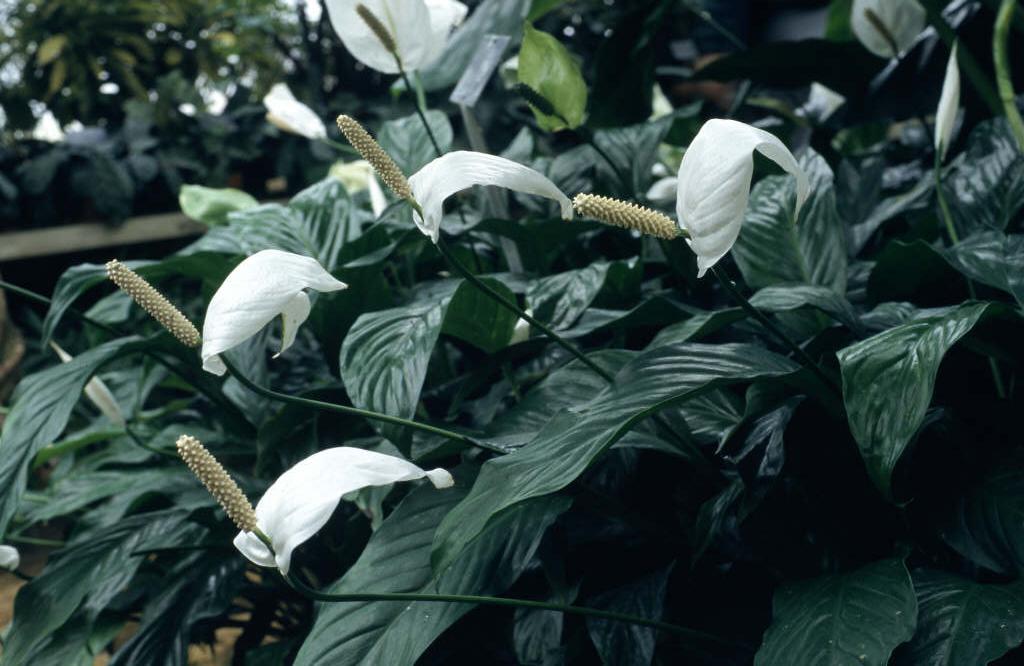Size
Ultimate height
0.1–0.5 metresTime to ultimate height
5–10 yearsUltimate spread
0.1–0.5 metresGrowing conditions
Moisture
Moist but well–drainedpH
Acid, Alkaline, NeutralColour & scent
| Stem | Flower | Foliage | Fruit | |
| Spring | White | Green | ||
|---|---|---|---|---|
| Summer | White | Green | ||
| Autumn | Green | |||
| Winter | Green |
Position
- Partial shade
Aspect
North–facing or South–facing or West–facing or East–facing
Exposure
Sheltered Hardiness
H1BBotanical details
- Family
- Araceae
- Native to GB / Ireland
- No
- Foliage
- Evergreen
- Habit
- Clump forming
- Potentially harmful
- Harmful if eaten, skin/eye irritant. Wear gloves and other protective equipment when handling Pets: Harmful if eaten, skin/eye irritant - for further information and contact numbers regarding pets, see the HTA guide to potentially harmful plants
- Genus
Spathiphyllum are evergreen rhizomatous perennials with lance-shaped leaves and tiny white flowers borne in a dense spike within an ovate, white, hood-like spathe
- Name status
Correct
- Plant range
- Colombia C America
How to grow
Cultivation
Under glass grow in partial shade. Flowering may suffer in deep shade. Use peat-free compost. During growth, water and mist freely; maintain a high humidity. Apply a balanced liquid fertiliser monthly. Pot on when root growth has overfilled the container. Suitable as a houseplant. May be grown outdoors in frost free conditions. See Spathiphyllum and houseplant cultivation for further advice
Propagation
Propagate by division in winter or immediately after flowering
Suggested planting locations and garden types
- Patio and container plants
- Sub-tropical
- Low Maintenance
Pruning
No pruning required
Pests
Generally pest-free
Diseases
Generally disease-free
Get involved
The Royal Horticultural Society is the UK’s leading gardening charity. We aim to enrich everyone’s life through plants, and make the UK a greener and more beautiful place.
